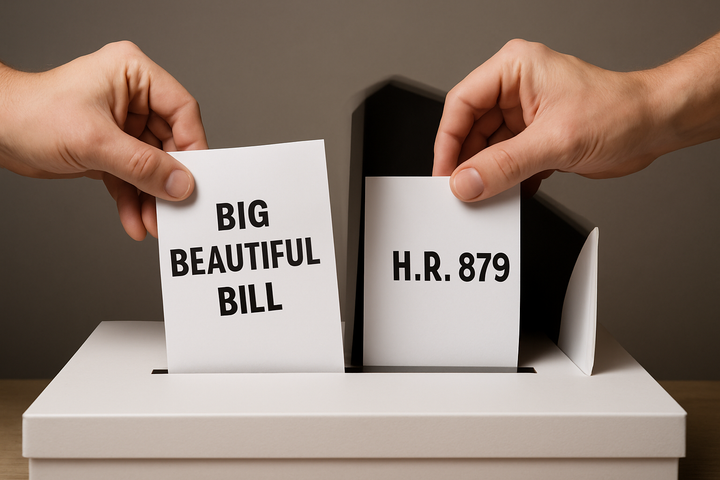A Silent Culling: What 51,000 Preventable Deaths Reveal About Trump’s Health Care Cuts

“Are we just left to die?”
Gail Halverson asks the question quietly, but it lands with weight. A retired resident of Spokane, Washington, Gail depends on both Medicare and Medicaid to manage her health. In March, she spoke at a roundtable hosted by Senator Maria Cantwell.[3] Her voice echoed the anxiety shared by tens of thousands across Eastern Washington as cuts to public health programs loom.
Trump's Bill and the Human Cost
With Representative Michael Baumgartner’s vote for President Trump’s so-called “Big Beautiful Bill,” those anxieties have taken form. The bill, passed by the House and now under Senate review, proposes $600 billion in Medicaid cuts, along with reductions to Medicare support and Affordable Care Act subsidies. An independent analysis by the University of Pennsylvania’s Leonard Davis Institute and Yale’s Center for Infectious Disease Modeling and Analysis estimates these changes would result in over 51,000 preventable deaths annually across the United States.[1] Just yesterday, Senator Ed Markey (D-Mass) referenced that same projection in a Senate press release, warning of “51,000 preventable deaths every year.”[2]
Why 120 Deaths in WA-5
WA-5 population: ~785,000
U.S. population: ~333 million
Proportional estimate:
(785,000 ÷ 333,000,000) × 51,000 ≈ 120 preventable deaths per year
These are not statistics. They are neighbors, parents, children, and veterans whose lives hinge on care access. With a single vote, Rep. Baumgartner has endorsed a federal policy that will cull the most vulnerable WA-5 residents from the social safety net each year in the name of fiscal restraint.
The False Promise of "Savings"
While Rep. Baumgartner claims the bill will save money, researchers at the Journal of Political Economy have placed the economic value of a life saved through Medicaid coverage between $327,000 and $867,000.[4] Using these benchmarks, the loss of 120 lives in WA-5 translates to an annual economic toll of $39 to $104 million. In this light, the bill’s promise of savings appears less like a rational adjustment and more like a dangerous false economy.
Who Gets Left Behind?
This is, in effect, a policy of attrition: a silent culling. It targets those without the means or power to resist: seniors in nursing homes, low-income workers with chronic conditions, and children in rural areas without pediatricians. Gail Halverson is one of them.
To this day, Rep. Baumgartner has offered no public justification for the human toll his vote implies. As doctors protest in Spokane and clinics brace for budget-driven closures, the silence from his office is as loud as it is telling.
Rep. Baumgartner must now answer:
- Who, among the residents of WA-5, does he consider acceptable collateral damage?
- What message does he have for the 120 families who may lose a loved one next year because of this bill?
- Will he stand beside them at those funerals and explain the cost-benefit calculus that rendered their lives expendable?
Gail's Question Still Echoes
Gail Halverson’s voice, once a tremor of concern, now echoes as a question of accountability. If her life, and the lives of those like her, no longer count in our legislative priorities, then it’s not just a health care system we’re dismantling. It’s a measure of who we are willing to let disappear, quietly, under the guise of savings.
She asked if we are just left to die.
After Baumgartner’s vote, we have to ask: how many will?
Footnotes
- University of Pennsylvania Leonard Davis Institute and Yale Center for Infectious Disease Modeling and Analysis. 2025 study on projected health outcomes of federal entitlement program reductions. Link
- Senator Ed Markey (D–Mass.), Press Release, June 3, 2025. Statement warning of “51,000 preventable deaths every year” as a result of proposed Medicaid, Medicare, and ACA cuts. Link
- Gail Halverson’s remarks were delivered during a March 2025 roundtable in Spokane hosted by Senator Maria Cantwell. Link
- Nathaniel Hendren and Ben Sprung-Keyser, “A Unified Welfare Analysis of Government Policies,” Journal of Political Economy, vol. 128, no. 7, July 2020, pp. 2739–2792. Link

